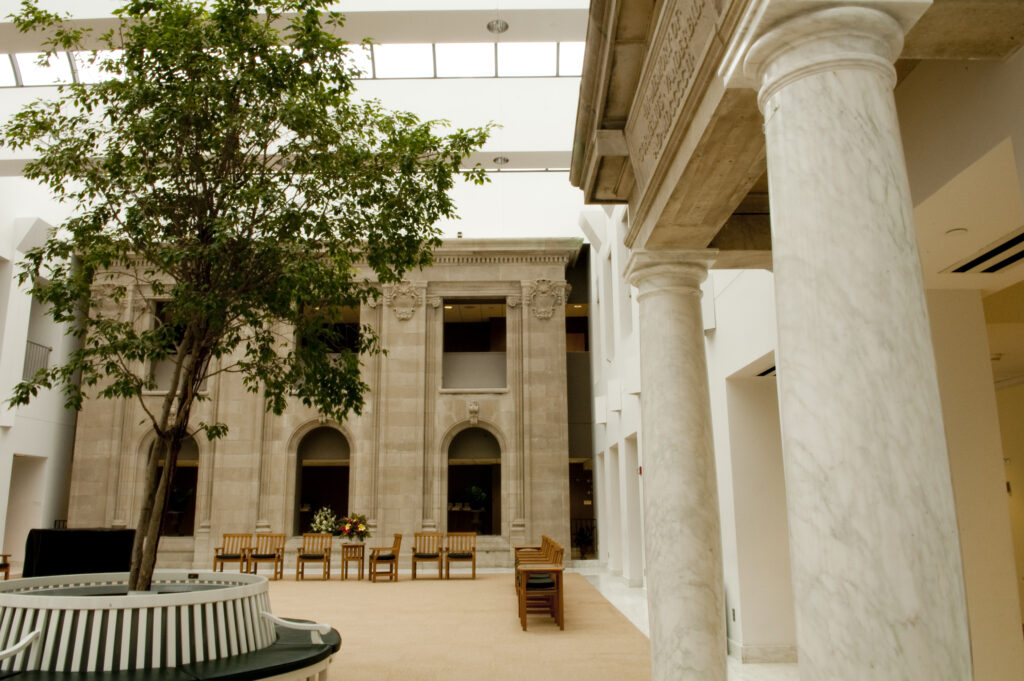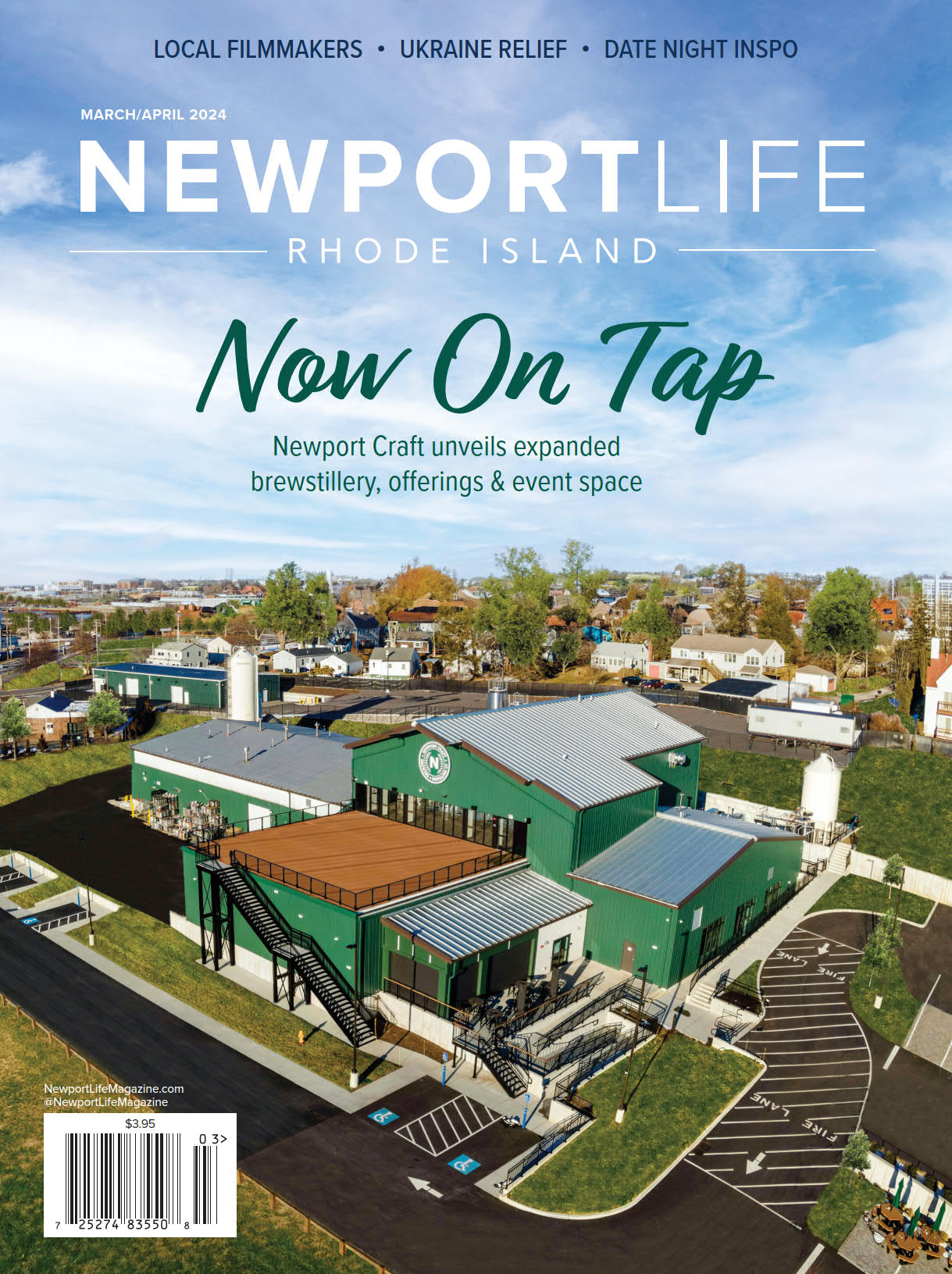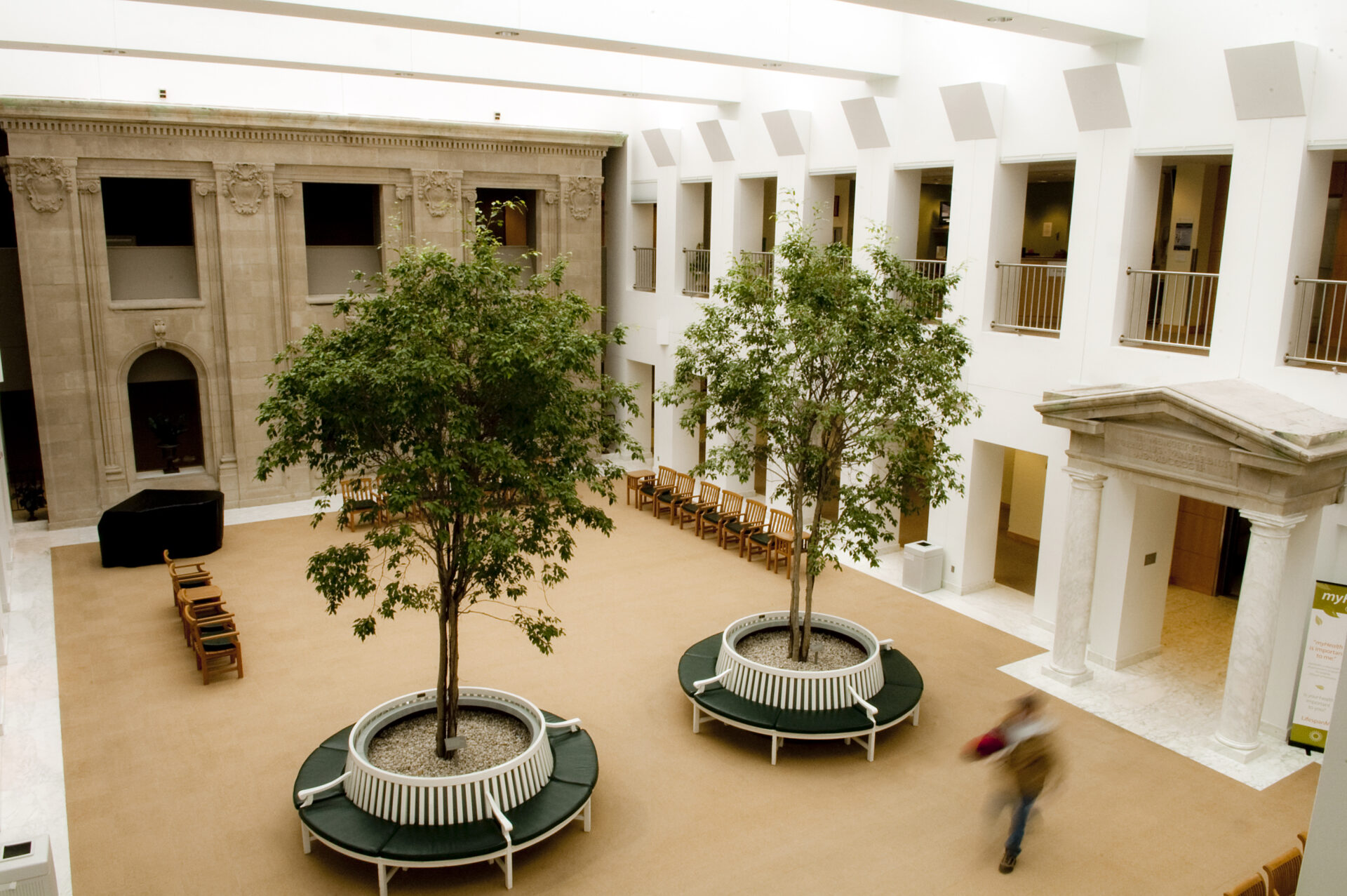“Our blood type is grit”
By Betsy Sherman Walker
Newport Hospital has served the community for 150 years — and counting
The necessity of a Hospital in the City has been long acknowledged, and its establishment is now warmly urged by the members of the Medical profession who know, better than any others, how much suffering is caused and how much life is endangered because there is no such institution here.
HENRY LEDYARD, founder and first president of Newport Hospital, in an appeal to the community for funds to help build the new facility, May 1872
A number of years ago, a young doctor on staff at Newport Hospital stopped in to visit a patient — a prominent Newport socialite who lay in his bed, approaching death. It was meant to be a social call; the man was a friend and was not one of the doctor’s patients.
When he entered the room, the doctor found this man surrounded by family, who were keeping vigil. He was quickly brought into their circle, where they gathered with arms linked. In a quiet and dignified way, the group began singing as the elderly gentleman peacefully let go.
The intimacy of it all caught the young doctor off guard. At first, he was mildly uncomfortable being present for such a moment, but soon found it touching — if not revealing. Over time it became one of his many hospital stories.
This doctor was Dr. Benjamin Walker, a longtime physician who served as the head of the Emergency Room, until his own passing in 2009. Dr. Walker would come to understand, like many before and after him, that the hospital, as a presence in the community, is far greater than the sum of its parts.
A storied history
Anyone who has ever set foot in Newport Hospital has a story. Some are tales of joy; others of sorrow. But if you want the story of the 150-year-oldinstitution, you will find it not so much in the tales of bricks and mortar, or births and deaths, or tonsillectomies and appendectomies; but in the voices of the doctors, nurses, aides, technicians and patients telling their experiences.
The hospital has served the community since its doors officially opened on Nov. 22,1873. On that day, a single patient was admitted — but six more were soon to follow. The founder and first president of Newport Hospital was Henry Ledyard, a summer resident and philanthropist.
Ledyard was the ringleader inorganizing his social cronies to pitch in. With their efforts, a two-story, 12-bedhospital was built — at a final cost of just over $11,000 — on a scant acre of land Ledyard owned on Friendship Street, near Broadway. A location he described as “away from the thickly settled part of the city…and exposed to healthy breezes,” and which he thought was ideal.
Among the many regulations established at the time, the hospital board promised that “sick or hurt persons, who are unable to pay for medical or surgical assistance, shall be admitted free of charge.”
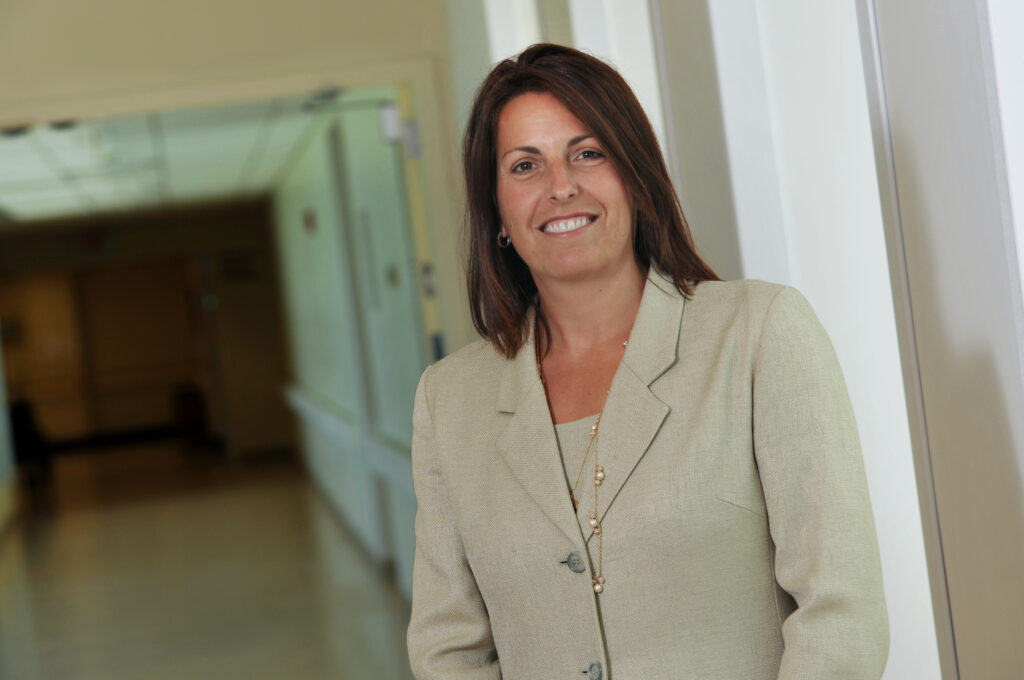
Crista Durand began her tenure at the hospital as the 20th president and, notably, the first woman at the helm, in 2014. Her first day on the job coincided with the hospital’s annual fundraising gala. She recalls how, amid all the fundraising fuss, the hospital held a reception for her in the space known as the Atrium. “Everyone — from every department — came to welcome me,” she said.
This was not Durand’s first rodeo.
“I’d worked in hospitals elsewhere,” she says, “and believe me, this was the first time I’d ever seen anything like that. I thought, ‘Wow’ — I’ve got to keep this going!’” The indelible sense of community was what drew her in and became both her beacon and her rudder.
“The hospital was founded by philanthropists,” she says. “That makes it so remarkable.” Philanthropy at the root of an institution’s culture, she adds, “is very unique — you don’t see it in other [cities].”
An evolution of care
Physicians, it turns out, make good historians. In 1976, Howard Browne, a local surgeon, published “The Newport Hospital: A History, 1873-1973” as part of a centennial tribute. Brown, a fixture on the hospital staff, painted a colorful — often harrowing — picture of the state of community health in post-Civil War Newport.
Health care, as we know it today, was nonexistent.
Treatment, including surgery, was administered at home — in bedrooms, living rooms, on kitchen tables. Friends and family assisted; the doctor diagnosed illness, Brown explained, “solely with the aid of his five senses. He looked at the patient for the tell-tale signs of disease, felt, thumped, and listened, sometimes with his naked ear pressed to the chest, sometimes with his stethoscope (frequently stored rolled up within the crown of his high silk hat).”
From the day it admitted its first patient (according to Browne, no doubt one of the many seamen who worked on the cargo ships and fishing boats that filled Newport Harbor) the hospital was already outgrowing itself.
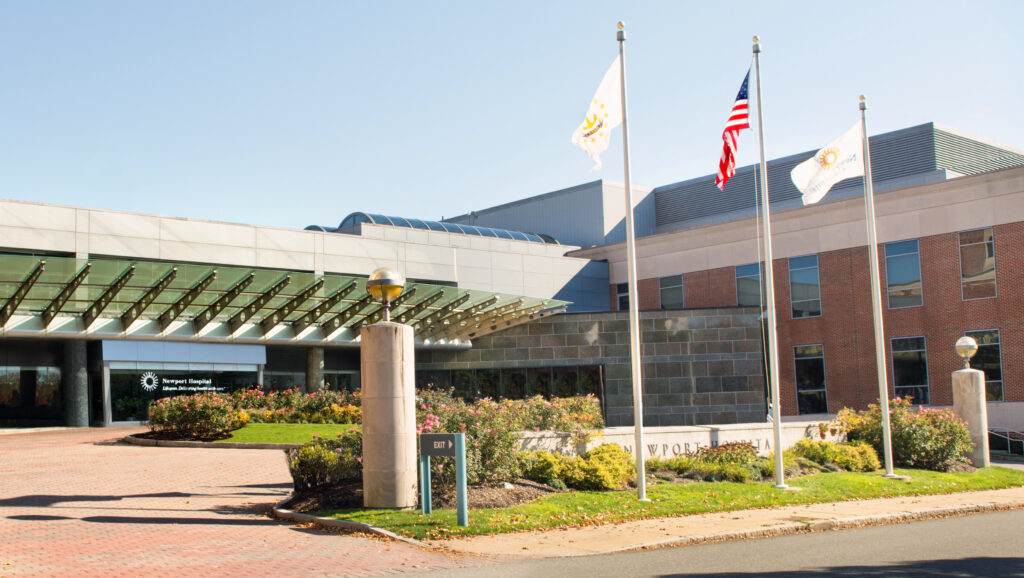
In 1886 the School of Nursing opened with six students. State-of-the-art operating rooms were added in 1893, as well as additional rooms to accommodate the growing numbers, at the other end of the economic spectrum, of the wealthy summer residents seeking medical attention. As one might imagine, according to Durand, characters lifted straight out of “The Gilded Age.”
As if on cue, the Vanderbilt building was donated by Alice (Mrs. Cornelius) Vanderbilt in August of 1903 to honor her late husband. It was, according to The New York Times, “constructed of Indiana limestone with ornate cornices and elaborate high relief carvings, which give the building an artistic finish.” Consisting of three floors, the new facility increased the bed count by 34.
On the ground floor, the hospital finally got a much-needed outpatient department. The second floor consisted of several wards with a large sunroom at the south end; and on the third floor there were the “new” features of children’s and maternity wards. Hospital policy continued to dictate that those unable to pay were treated for free.
The Times deemed the building “magnificent.”
The largesse of Alice Vanderbilt brought Newport Hospital firmly into the 20th Century, an era of progress and its first pandemic. In 1926, the X-ray department was modernized. The Borden Building was built in 1936. There were no major changes until the Turner (a.k.a. Tower) Building was opened as the “new” hospital in 1970, when Vanderbilt’s turn-of-the-century contribution was razed to make way for the upgrade. The decorative columns and carvings from the original building, however, were preserved to create the stunning interior of the current Atrium, which is now used as a public space.
Soon after, in 1972, the hospital opened its mental health center. And in 1997, it became a Lifespan affiliate. More recently, the hospital installed state-of-the-art MRI diagnostic equipment in a variety of locations throughout Aquidneck Island, including an open-sided MRI installed last summer in Portsmouth as well as new 64-slice CT scanners and 3-Dmammography units in both Newport and Portsmouth.
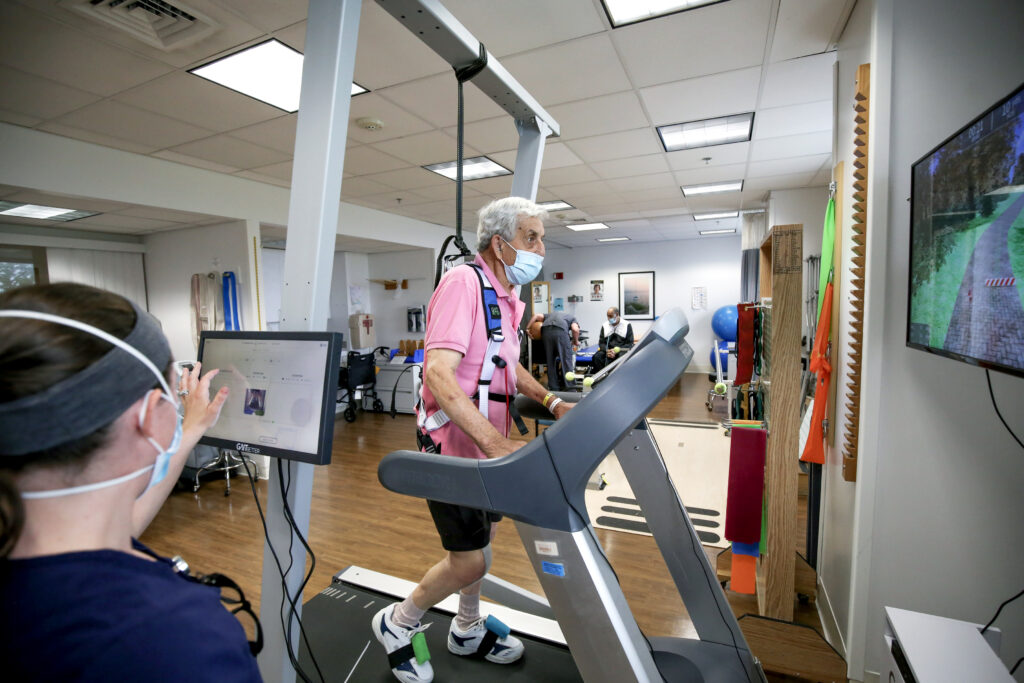
All in the family
Pam McLaughlin has been a fixture at the hospital for 35 years. Her official title is Director of Patient Experience, but overtime she has also overseen Nutrition, Environmental Services, Central Transport, Security, Guest Services, and the Volunteer Program. McLaughlin comes from a large family, all of them living on the island. “We have all had experiences at Newport Hospital,” McLaughlin says. “I bet you we’ve been in every single department.”
A few years ago, it became even more personal when her husband was in an automobile accident on Aquidneck Avenue. He was brought to the Emergency Room, intubated, and transported up to Providence. Once on the mend he returned to the Vanderbilt Rehabilitation Center.
“My family is just like every other family on the island,” she says. “When families are in need of care and stressed, it helps [to be where] they know and love each other, and to have everyone understand the culture of the island. It makes a huge difference,” she says, “and we do it really well.”
She briefly worked elsewhere and came back. “All hospitals have different cultures,” she says. “My love is here. It’s a privilege,” she adds, to be doing what she does. “It’s how I give back to the community.”
McLaughlin’s roots run especially deep. Her mother, Jackie Jones, is a 1959 graduate of the Newport Hospital School of Nursing, where she was in a class of 30 women.
“Even though her family home was on Kay Street, all the nursing students were required to live in the dorm,” says McLaughlin. “My mother remembers having a curfew of 9 p.m. — and that all the students were encouraged to attend the dances that were coordinated with the Navy Officers Candidate School.”
The nursing school began accepting men in 1971, with the admission of one male student; two more followed in 1973.The school closed its doors in 1990. Today, the building houses administrative offices.
McLaughlin has seen vast changes since her mother’s time. “Health care is a different culture,” she says. From both a professional and a personal vantage point, she sees the Vanderbilt rehab center as a game-changer that has turned the hospital into “a flagship and an anchor since Day One. People come from all over to use that department.”
And perhaps nothing has changed as dramatically in the past 150 years as the experience of having a baby. “The support that new moms get now,” she says, has seta standard.
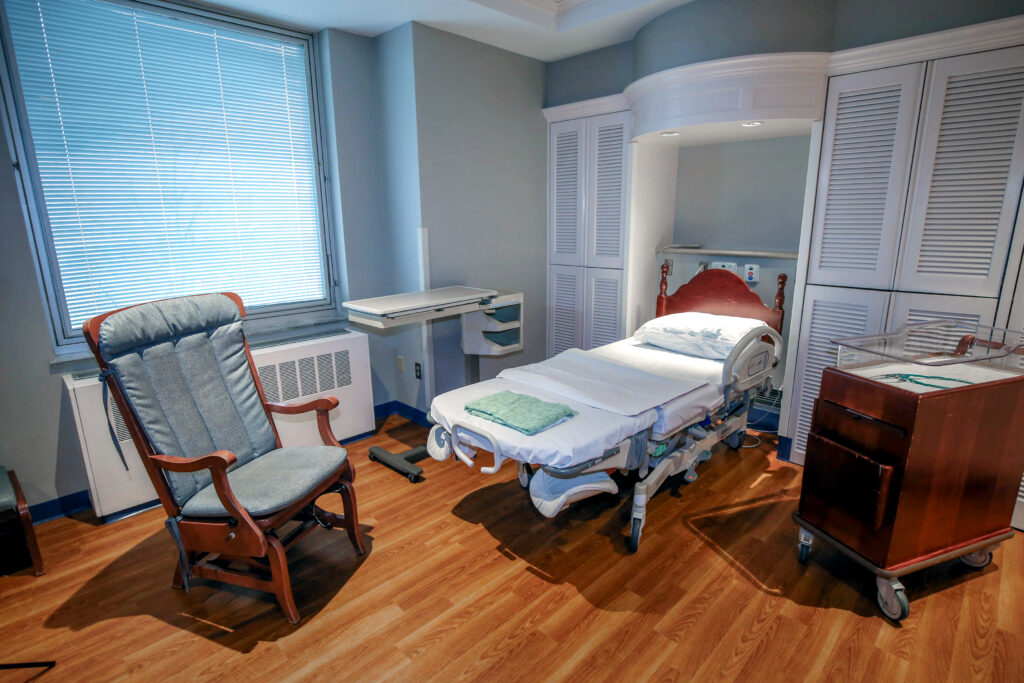
Where lives begin
Mardi Sayer and her nine siblings were born at Newport Hospital. Her three children were born there, as was her husband — and several cousins. Sayer remembers stories of mid-century motherhood (when the baby boom was in full throttle) that might raise a few eyebrows today.
Back then, according to her mother, Mary Walsh, women in labor waited in the hallways on gurneys “because the maternity ward was so full there were no available beds.”
When her mother had twin boys right before Christmas, Sayer said, “She said to one of the nurses, ‘Oh my god — what am I going to do — with seven children at home and Christmas coming?’ The nurses told her to go home, leave the babies, and they’d take care of them — and she could come and visit and feed them, and she could bring them home after Christmas. And that’s what she did.”
Kiki Mitchell was born at Newport Hospital (and is the sister of this writer). She has been hospitalized three times — for a broken collarbone when she was 16, and in 1971 and 1973 when her two children were born. Mitchell has also witnessed the quality of care given to family members — her mother passed away there in 1981.
“I have so many memories of being there,” Mitchell says. “The best is that in1971 my husband was the first father ever allowed in the delivery room.” When her daughter was admitted a few years later, “I was the first mother ever allowed to sleep in an admitted child’s room.” Rules were bent to ease her stress in an approach that was holistic long before the word became integral to hospital policy. “How amazing to think,” Mitchell added, “of neither being the case today.”
“Newporters” since birth
There is no right or wrong answer to the longstanding — but friendly — dispute about the pedigree of a true Newporter requiring a birth certificate issued from Newport Hospital. But it does illustrate how authentically people here want to be born “Newporters.”
For the many parents who have birthed their babies more recently in the spa-like setting of Newport Hospital, it was Noreen Stonor Drexel’s gift to the hospital in the early 1990s that transformed the experience. Since it was built in 1995, more than 13,000 little Newporters have been born. The center underwent a major renovation in 2015 and reopened as one of the premier birthing facilities in the state.
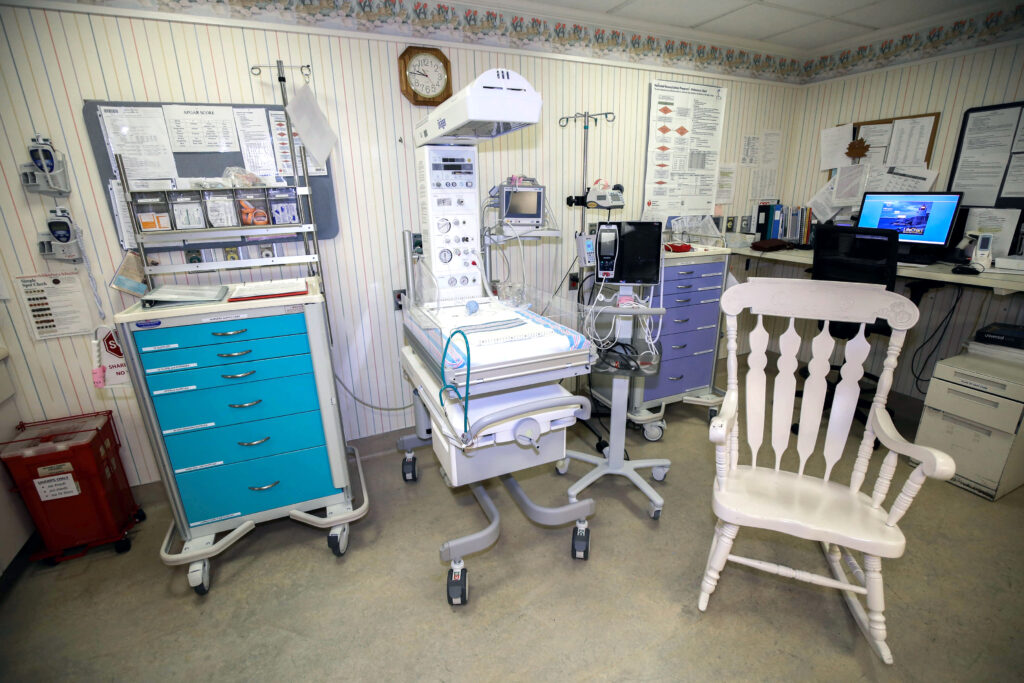
Holding the scissors front and center at the 2015 ribbon-cutting was nurse-midwife Karolyn Zambrotta, who has been associated with the hospital for nearly 40 years.
Chicago-born, Zambrotta came to Newport in the early 1980s and got her diploma from the School of Nursing in 1984. She had not decided on a specialty until her son was born at the hospital in1985 — when the maternity ward “was still on the ground floor of the Tower and all the babies were on view right there.” Coincidentally, the Navy hospital had just closed its maternity ward, and Newport was experiencing a baby boom of sorts.
Zambrotta saw an opportunity, got training, and worked there from 1985-2000, during which time she trained as a midwife. She left in 2000 for a job in Taunton but returned to Newport in 2015.
The people drew her back in.
“They were so welcoming. I knew a lot of the nurses and administrators; a lot of the staff were still there,” she says.
Like Durand and McLaughlin, Zambrotta recognized a quality not found everywhere: the indelible aura of a caring community at work. “It wasn’t really ingrained elsewhere the way it was in Newport. Here you see everybody around you, watch their babies grow, the families grow.”
Zambrotta has countless stories, but as one might imagine, “my one special moment was that I delivered my grandson.” Now, she adds, “I see my kids’ friends having babies. It’s so nice. It’s just a part of life that’s so special.”
A timeless appeal
Ledyard’s “Appeal” in May of 1872 to help “the sick and injured who are unable to obtain at home the care and attention they require” was a call to action.
Durand says that if she could have a conversation with Ledyard today, “I would want to express my gratitude for bringing Newport Hospital to life,” she says, “and share that the same principles from 1873 hold true today.”
Both Durand and McLaughlin are particularly proud of the hospital’s response to what McLaughlin referred to as the “trauma of the pandemic.” Their objective, she said, was to “remain hyper-focused on the well-being of the staff,” which enabled the hospital, as a team, to “rise above it all and really take charge.”
Durand agrees. “I would also like to share with Ledyard that our blood type is grit, which I believe was tested,” she says. “I believe he would have been proud of our health-care team.”
